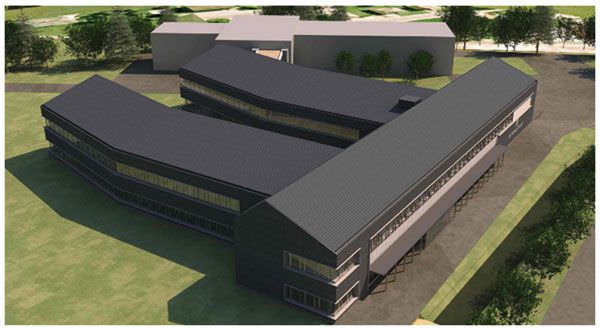In this period of double-digit growth in the mechanical watch sector, the extensions or creations of new production facilities have become strategic issues for many brands. One of the most important industrial needs today is the restructuring of the various watch métiers under one roof. We saw this a few years ago with the examples of Patek Philippe followed by Vacheron Constantin, both of which had production units spread out over several sites. By regrouping them into one area, they established conditions amenable to better integration of the different steps in the creation of a watch, which is ultimately felt in the product itself. At the stage of full maturity that timekeeping is in today, one of the nerve centres is the complete ‘fusion’ of a watch’s design and movement.
Audemars Piguet felt that it was not only cramped in its manufacturing facility, thus leading to successive additions (the first building from 1875 was enlarged in 1907, then in 1957, with annexes added in 1972 and 1974, plus a new production unit in 2000), but that this structure no longer corresponded to the demands of the brand’s current production. In addition, the company was scattered over five different sites in the Vallée de Joux. Feeling it necessary to respond to these new industrial challenges along with the continuous growth that can be expressed both in quantitative terms - 25,000 pieces per year - as well as qualitatively, with more and more complicated pieces, cases in gold, etc., Audemars Piguet took the decision to regroup its production into a new facility.
An investment of CHF 35 million was earmarked for the ‘Manufacture des Forges’ (the historical name of the site) as a way for the Audemars Piguet group to strongly affirm its independence (it is the last and oldest Swiss manufacture still in the hands of the founding family). This new facility should also respond to several objectives relating to the company’s development: a controlled growth of 15 percent per year corresponding to an increase in production of 8 to 10 percent (the difference is explained by the increase in the average cost of the pieces), the strengthening of the classic and contemporary collections, and the development of a jewellery line.

Industrial stakes
On an industrial level, the Manufacture des Forges should allow the company to strengthen its principal fields of activity: more sophisticated integration of the production of its own movements and strengthening of the already advanced integration of cases and assembly. The manufacture will also include a Research and Development department as well as a technical office and a logistics bureau.
This restructuring under one roof is intended to improve the collaboration among the various métiers as well as to enhance the exchange of savoir-faire between groups. Furthermore, it will also preserve the artisanal spirit, which is the basic foundation of haute horlogerie, by increasing the number of small production units and ateliers that will employ a maximum of 40 people, thus offering excellent working conditions.
The architecture of the structure has been designed to meet these needs. In the form of a U, the building will have a surface area of 7,500 square metres, and contain a transversal wing, which will house the diagonal métiers, flanked by two parallel wings, one dedicated to movements and the other to watches. Passageways will join them to an existing building where the various assembly functions will take place.
Sustainable development
In conformance with the credo of the Audemars Piguet Foundation, created in 1992, which aims to conserve the world’s forests (58 large-scale projects were conducted in 26 countries, financed by a portion of the proceeds from watch sales), this new manufacture has been designed according to strict specifications with a view to the long term. Perfectly integrated into the natural and lush green surroundings of Le Sentier, the facility will not use any harmful materials in its construction. Heated by natural wood (plenty in the region), it will not use any fossil fuels for its air conditioning, thanks to a heat reclamation system. In this way, the manufacture has earned the Minergie-Eco label, a very prized certification that emphasizes that it will make the smallest impact possible on the environment.
This environmental conscience does great credit to Audemars Piguet, which is leading by example and, by counting on its sustainable development, shows consistency while reinforcing its own independence.
Source: Europa Star August-September 2007 Magazine Issue





